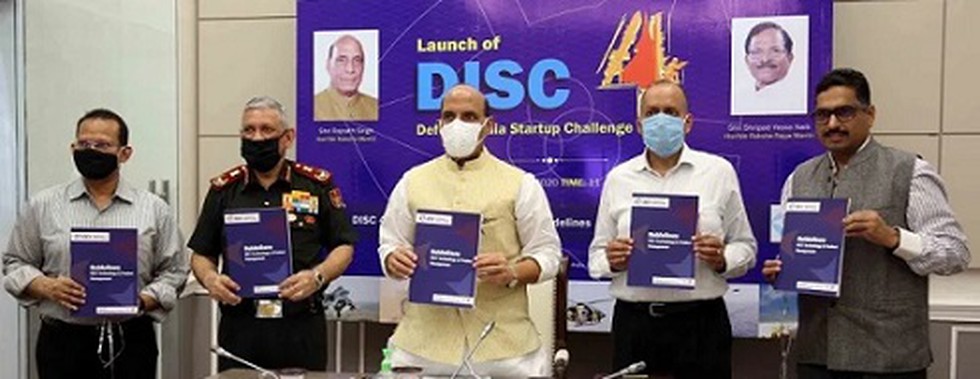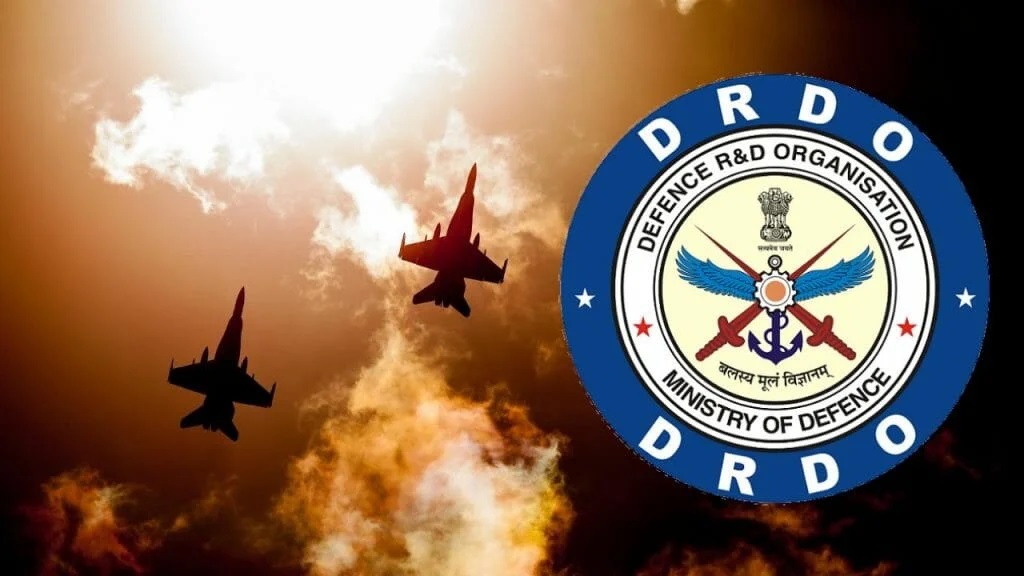India’s Defence Research and Development needs additional thrust in the coming years to meet the requirements of the Armed Forces
First off, some data on global investment on defence research and development to set the context :
- The USA is, by a wide margin, the largest spender on defence R&D in the world.
- The USA accounts for nearly 60% of global spending on defence R&D.
- In the USA, civilian R&D is nearly 10 times as large as defence research and development.
- India spends 0.8% of the GDP on all R&D and has 156 researchers per million population.
- In comparison – the USA spends on all R&D – 2.8% of GDP and has 4231 researchers per million population, China – 2.0 % of GDP and 1113 researchers per million population, Israel – 4.8% of GDP and 8255 researchers per million population. The other OECD countries, S. Korea etc all outperform India on the above parameters.
India’s underfunded defence R&D and low overall researcher density have resulted in India being unable, thus far, to develop any breakthrough military technology or weapon system and remains among the largest importers of military equipment in the world.
While there is recognition, that in order to attain self-reliance in defence, greater investment in defence research and development is imperative; India is faced with a seemingly intractable dilemma – balancing the need for greater investments in defence R&D versus the long- term viability of these investments.
The agencies involved – the government, the private sector and the R&D establishment are cognisant of this dilemma. A policy document, “Strategy for Defence Exports”, on the Department of Defence Production’s (DDP) website, acknowledges that large investments in local R&D and production would not be viable if they are intended to only cater to domestic demand. The policy document highlights that “the policy of maximising indigenous production without well-supported R&D policy and export strategy may not bring desired results. Therefore, the defence industrial policy has to be supplemented by the strategy for defence exports without which the economic base of the defence industry would be difficult to sustain in the present competitive economic environment.”
Investments in defence technologies are capital intensive and provide returns only in the long-term. Such investments are viable only when exports, which provide economies of scale, are pursued whilst simultaneously fulfilling domestic demand. However, it seems unlikely that India will be able to export any sizeable quantities of defence equipment, developed and manufactured locally, anytime soon. The reasons are many and well- known:
- The arms market is ultra-competitive with established global players offering equipment that has been proven in combat by militaries across the world.
- The mature and the new-entrant (China, S. Korea) arms exporters, amongst themselves, currently receive the custom of almost all the arms-importing nations of the world and are strongly entrenched with their core customers.
- Even in the case of mature & established global firms, their domestic demand does not provide them with economies of scale. The established players are also dependent on exports for maintaining a sustainable business. The existing, mature suppliers, well-entrenched with their customers, will not cede space to new entrants easily.
- Globally, India does not enjoy a favourable reputation for either technology R&D, high-quality engineering, modern manufacturing or product reliability.
- Equipment produced in India, even under ToT/licensing arrangements, have not been able to inspire confidence, amongst even the domestic buyers, since they have been plagued with a number of quality issues. Indigenously ‘developed’ and manufactured equipment like the Arjun tanks, the light combat aircraft and bullet-proof jackets often can not be used because of performance issues. Recently, the Indian Army rejected, an Indian-made rifle (relatively low-tech equipment) for the second year in a row after it reportedly failed quality tests.
- Customers rely on ‘cues’ that reveal the qualities of the product. The most important cue in arms purchase is the proven record of their use by the exporting country’s own armed forces.
- India, currently, does not have any weapon platform or weapon system, of indigenous design and built using indigenous parts, electronics, sub-systems etc that has been proven in operation with India’s armed forces.
- The negative ‘country-of-origin perceptions that accompany Indian made products will take time to reverse and dispel.
Given this scenario, the reluctance of the private sector to commit investments in defence research and development is understandable. In countries with mature defence industry, private investment in R&D outstrips government investment. However, India’s defence industry is just beginning to strikeout. At this stage of the industry’s growth, the government needs to handhold the private industry and foster a favourable climate for investments wherein there is a reasonable assurance of commensurate returns. Some measures have been instituted in this direction.
Specific provisions have been provided in the MoD’s Defence Procurement Procedure 2020 (DPP-2020). DPP-2020’s Make-I (Government funded up to 70%)/Make-II (Industry funded)/Make-III (Indigenously manufactured) provisions are aimed at increasing investments in indigenous defence R&D and manufacturing. An additional category called ‘Innovation’, has now been introduced that aims to further aid indigenous R&D.
The Make-I/II/III schemes also include provisions to protect the interests of the MSMEs. The provisions mandate that development projects of value below Rs 10 Crores (for Make-I and below Rs 3 Crores (for Make-II/III) would be preferentially awarded to the MSMEs.
Additionally, for some time now, in defence procurements – the highest priority is being accorded to the Indigenously Designed, Developed & Manufactured (IDDM) category of equipment, again signalling a policy level intent for attaining self-reliance in defence needs. These enabling provisions should now encourage the DPSUs and the private sector to commit more investment in R&D.
Another route for the Indian industry to take – for safer R&D investments – is to scout for products that have both military and non-military applications. There are several examples of expensive technologies that provide dual – military and civilian – applications. GPS is probably the most well-known example. GPS finds application in watches and mobile phones, and also on intercontinental ballistic missiles. Rocket technologies developed for peaceful space applications, also power missiles. Nuclear power is harnessed, for powering our homes and for the atomic bomb. Research undertaken in chemical and biological laboratories have applications that better our lives, but are also used to produce chemical and biological weapons. Even a seemingly benign technology such as night vision and thermal imaging finds applications with firefighters & photographers and also helps soldiers kill more efficiently.
Dual-use technologies, that inherently present opportunity for a wider range of applications, provide economies of scale assuring safer returns on R&D investments.
Together with addressing concerns related to R&D investments, concerns with the existing structural framework of the R&D eco-system also require attention. India’s R&D and innovation ecosystem are riddled with a number of fundamental infirmities. Some of these are emphasis on applied research over basic research:
- Low researcher/scientist density.
- Poor human resource base lacking the training required to undertake research.
- Absence of a dedicated policy on defence R&D and manufacturing.
- Lack of a higher organisational structure to provide direction, thrust & oversight to indigenous R&D.
- Inadequate investment in defence R&D (6% of the defence budget compared to 10% or higher in the USA & China).
A well-planned, deliberate and resolute elimination of the weaknesses in the larger defence R&D eco-system should be the first step in any move to enable self-reliance in defence needs.
In the absence of focus on basic research, Indian R&D has largely been chasing technologies already developed elsewhere. Sadly, ‘research’ in India is, very often, just reverse engineering – with labs engaged in locally developing technologies that have matured elsewhere but cannot be accessed either due to strict export control restrictions or the strategic considerations of the other country. This situation can be corrected if Indian R&D initiatives, both, government and industry-funded, shift focus to basic research and dual-use technologies.

Programs such as the iDEX (innovation for Defence Excellence) and the DISC (Defence India Startup Challenge) are good initiatives aimed at strengthening the innovation eco-system. These programs aim to mobilise the capabilities available in the larger Indian startup eco-system to develop products for the armed forces – crowdsourcing of talent.
The Indian defence industry has a ready example to emulate in its journey of self-reliance – the space establishment. When India’s space establishment was embarking on its own quest for self-reliance, it found itself in a situation not different from the one the defence sector faces currently.
During the course of the last two & half decades, the space establishment deployed well thought out remedial measures, that have led to India now being largely self-reliant in space & satellite technologies, best evidenced in the very successful launch (at a fraction of the cost of similar launches by other nations) of the Mars orbiter – ‘Mangalyaan’. The Indian space establishment has steered the indigenous development of several globally competitive technologies and even earns the country substantial revenue by undertaking satellite launches for several other nations.
India over the last two decades has come to be recognised as a hub for international R&D activities in IT, drugs, aerospace, pharmaceuticals, satellite technologies and biotechnology among others. The time is now ripe to replicate a similar success story in defence R&D.
Title Image Courtesy: https://govtjobsalert.in/
Disclaimer: The views and opinions expressed by the author do not necessarily reflect the views of the Government of India and Defence Research and Studies






